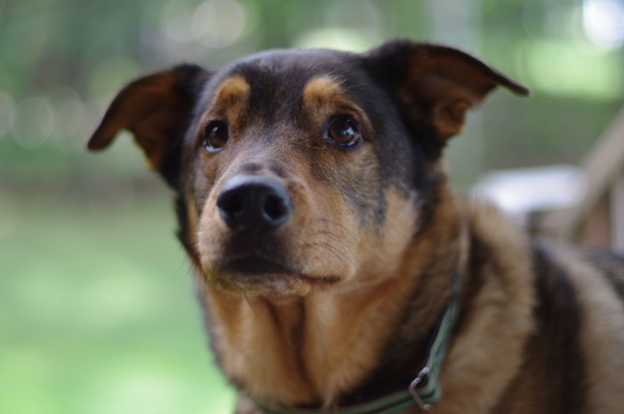Unless your faithful sidekick is an American Hairless Terrier, then you’re very familiar with a little side effect of owning a dog known as “Pet Hair Everywhere”. Vets call this normal phenomenon shedding and warn that it is not to be confused with abnormal fur loss caused by an underlying issue.
So, how can you tell which is which?
If your dog sheds excessively or your non-shedding “hypoallergenic” dog starts losing hair, what does it actually mean?
Sometimes Shedding Is Normal, Sometimes It’s Not
Year-round shedding in dogs occurs as a natural part of the hair growth cycle to which you’ve probably grown accustomed to by now. Except for the unfortunate fact that it leaves your furniture and upholstery in a mess, this type of shedding is no cause for concern. Messy or not, it’s what all healthy dogs do.
The only difference is, while some dogs shed their hair all year round, others do it seasonally. In most cases, seasonal shedding usually happens in spring and fall, when dogs prepare for the upcoming change in climate by shedding their undercoat behind. The upper layers of fur itself lose hair too, but still appear intact.
And, that’s exactly how you can tell whether or not your furry friend sheds excessively.
The kind of dog shedding to which we refer as normal, whether it takes place throughout the year or only during spring and fall, usually manifests itself in rogue hair in the dog’s fur or on your carpet, sofa, and clothes. The abnormal shedding leaves traces on the pet’s body that are visible and hard to miss. And if your dog is hypoallergenic and not supposed to be shedding at all, any sign of hair loss should be taken with caution.
What to look for?
- Pay attention to bald spots and entire patches of missing fur, for starters.
- A dog that sheds excessively typically experiences skin problems as well.
- The remaining hair may become brittle and dry and start to break easily.
- The dog may begin to behave differently, randomly avoiding your touch.
What Causes Such Troubling Hair Loss in Furry Dogs?
If you notice any of these signs of excessive shedding or hair loss in your hypoallergenic dog, it probably means that there’s an underlying health issue that must be catered to and treated under professional supervision. Grab your dog’s favorite toy and bring them to the vet. Don’t panic, as these issues can be remedied.
There are a couple of factors that can trigger excessive shedding in dogs:
- Allergies to pest bites, food, and medication, as well as to household and pet products.
- Hormonal imbalances, among which hypothyroidism is most common in dogs.
- Pregnancy and lactation, which also fall under the category of hormonal imbalances.
- Various skin conditions, which can be triggered by fungal or bacterial infections.
- Adrenal diseases, such as Cushing’s disease.
- Stress and trauma, as a consequence of an illness, an accident, or frequent moving.
- Stress from routine situations, such as veterinary visits, can cause excessive shedding for short periods of times
How to Successfully Treat Excessive Dog Shedding?
Whatever the underlying issue is, excessive shedding in dogs can be successfully treated as long as the issue at hand is discovered on time. This is why you shouldn’t take your chances with homemade remedies but take your dog to the vet immediately. Unlike a professional, the internet can be wrong.
Depending on the specific health issue, you can expect your dog’s vet to recommend:
- Antibiotics, in case your canine friend suffers from bacterial infections.
- Other medications or procedures, in the off-chance that there’s a nodule or a tumor.
- Hormone treatment, which typically includes supplements.
If it turns out that medication is not necessary, you can start reducing shedding through nutrition and grooming. Find a proper brush, designed specifically with your dog’s breed in mind, and switch to hydrocortisone shampoos and sprays, made to calm irritated skin and accelerate healing of skin cells.
As for nutrition, the most common food allergies are triggered by chicken, beef, eggs, soy, corn, and wheat, so make sure to exclude these ingredients from the dog’s daily menu. As a replacement, include olive oil or flaxseed oil to wholefood or add vitamin supplements such as omega-3 fatty acids.
If your furry little friend leaves more hair on the couch than usual or any hair at all if they’re hypoallergenic, the importance of pre-emptive care cannot be overstressed. Trust your dog’s doctor, and don’t take matters into your own hands. Excessive dog shedding is not a cause for alarm, but it’s always better to be responsible and stay on the safe side.
Cruisin’ Canines is your source for all dog care tips and professional Chicago dog walkers. Contact us today if you’re in need of any dog walking, dog boarding, or in-home pet visits.

